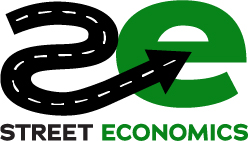Check out New Hope’s Drama Meter
New Hope, Pennsylvania, is making headlines as a rising luxury destination, drawing celebrities and wealthy buyers looking for an alternative to the Hamptons. With soaring property values and a booming real estate market, this small town is experiencing a dramatic transformation. But what does this mean for local economic development, and how can other communities learn from New Hope’s sudden surge in desirability?
At BusinessFlare® and Street Economics®, we know that economic success doesn’t happen by accident. From our lengthy experience in South Beach, we know all too well that when a place suddenly finds itself in the national spotlight, it brings both opportunities and challenges. On the surface, New Hope’s newfound appeal is great for local businesses, property owners, and developers. But if not managed properly, rapid growth can also lead to affordability crises, infrastructure strain, and displacement of longtime residents.
New Hope is benefiting from a shift in lifestyle preferences; people looking for high quality of life, charming walkable streets, and a sense of place. This aligns perfectly with what we always say about economic development: it’s about creating places people want to be. But the reality is that not every town can or should try to become a luxury enclave. The key is understanding your community’s assets and positioning them in a way that makes economic sense.
For cities and towns that want to attract investment without losing their character, here are a few key takeaways:
- Growth needs balance. When a place becomes desirable, property values skyrocket. This is great for some, but disastrous for others. Smart economic planning ensures that growth benefits both newcomers and longtime residents.
- Small businesses must adapt. A town shifting toward wealthier clientele means changing business dynamics. Local businesses must decide if they will cater to new luxury markets or maintain their existing customer base. The wrong move could lead to a wave of closures and empty storefronts.
- Development should be intentional. A real estate boom can bring opportunity, but if zoning, infrastructure, and transportation aren’t aligned, it can quickly turn into a logistical nightmare. Towns that grow too fast without planning for it often lose the charm that made them desirable in the first place.
New Hope’s rise is a perfect example of why communities must take control of their own economic destiny. At Street Economics®, we help cities and towns analyze their economic drivers, understand market forces, and develop strategies to manage growth intelligently. Whether a place is experiencing a boom or trying to spark one, economic development should always be intentional, because if you’re not planning for your future, someone else will do it for you.
Want More Drama?
Street Economics® is excited to introduce the Drama Meter, a unique tool designed to measure the tension and challenges within communities across the U.S. The idea for this feature stems from the political and social turbulence in Sturgis, South Dakota, which was aptly summarized in a comment from a recent Wall Street Journal article:
“Someone needs to do a drama meter for towns,” said Tammy Bohn, a Sturgis resident, co-owner of Sturgis Guns, and an outspoken participant in the city’s ongoing governance struggles.
Inspired by this observation, the Drama Meter quantifies a city’s “drama” by analyzing eight categories: local politics, governance, economic development, community engagement, quality of life, infrastructure, media perception, and external factors. Using this framework, we’ll provide a detailed score (1–10), breaking down the causes of tension and offering actionable solutions for communities to find stability.




Comments are closed